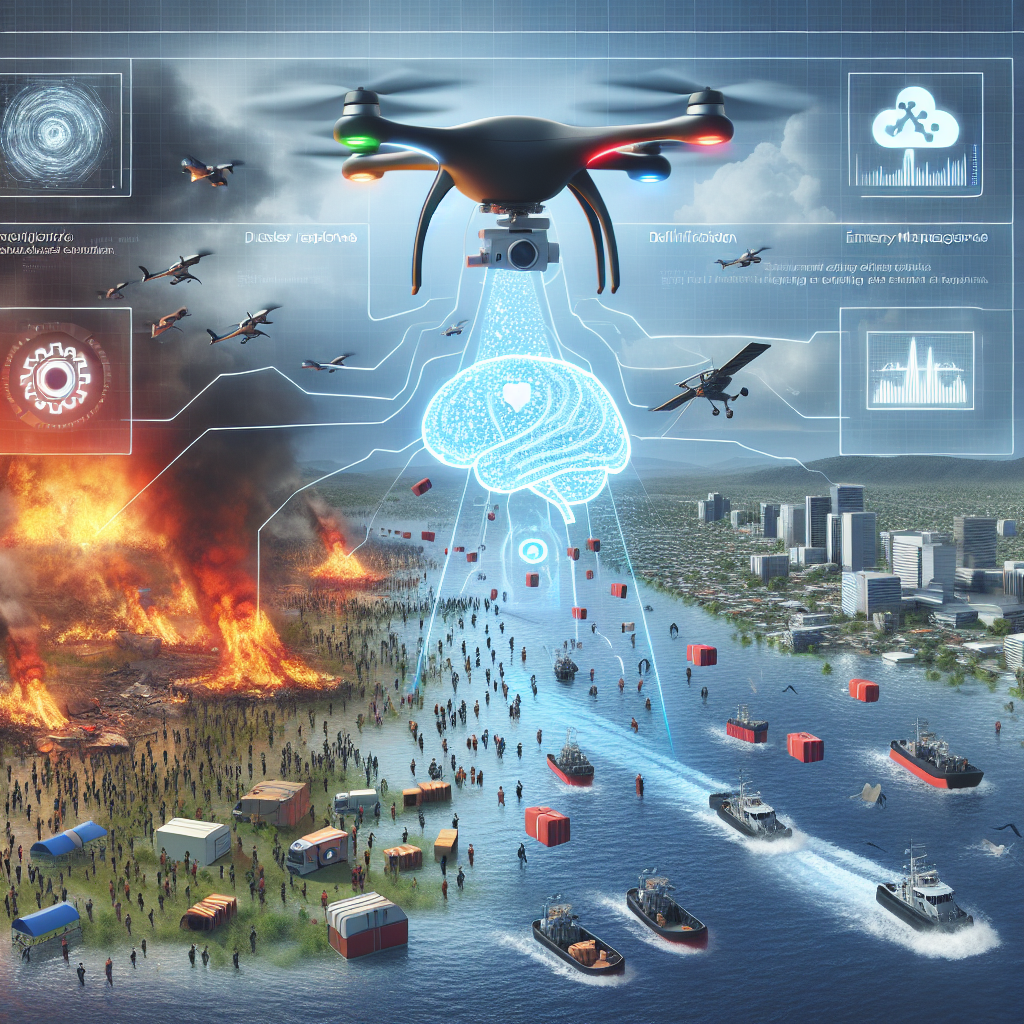In recent years, the world has witnessed an increase in the frequency and intensity of natural disasters such as hurricanes, earthquakes, and wildfires. These events have caused widespread devastation and loss of life, highlighting the need for effective disaster response and emergency management strategies. In this context, the role of AI-driven solutions has become increasingly important in improving the efficiency and effectiveness of disaster response efforts.
AI-driven solutions refer to the use of artificial intelligence technologies such as machine learning, natural language processing, and computer vision to analyze and interpret data in real-time. By leveraging these technologies, emergency responders can make more informed decisions, allocate resources more effectively, and coordinate response efforts more efficiently.
One of the key advantages of AI-driven solutions in disaster response is their ability to process vast amounts of data quickly and accurately. In the aftermath of a disaster, emergency responders are often inundated with data from various sources such as satellite imagery, social media, and sensor networks. AI algorithms can analyze this data in real-time to identify patterns, trends, and anomalies that can help responders prioritize their actions and allocate resources where they are most needed.
For example, during a hurricane, AI algorithms can analyze weather data, satellite imagery, and social media posts to predict the path of the storm and identify areas that are most at risk of flooding or damage. This information can help emergency responders pre-position resources such as food, water, and medical supplies in the areas that are likely to be most affected.
In addition to data analysis, AI-driven solutions can also assist in decision-making by providing recommendations and insights based on the data. For example, AI algorithms can generate real-time maps that show the locations of emergency shelters, road closures, and other critical information. This can help emergency responders navigate the disaster area more effectively and make informed decisions about where to deploy resources.
Another important application of AI-driven solutions in disaster response is in the field of predictive modeling. By analyzing historical data and using machine learning algorithms, researchers can develop models that predict the likelihood and impact of future disasters. These models can help government agencies and emergency responders better prepare for and mitigate the effects of disasters, ultimately saving lives and reducing damage.
Moreover, AI-driven solutions can also facilitate communication and coordination among different stakeholders involved in disaster response efforts. For example, chatbots powered by natural language processing can provide real-time updates and information to affected populations, helping them stay informed and safe during a crisis. Similarly, AI algorithms can analyze social media posts to identify emerging trends and concerns among the public, enabling emergency responders to address these issues proactively.
Overall, the role of AI-driven solutions in disaster response and emergency management is crucial in improving the resilience and effectiveness of response efforts. By leveraging the power of artificial intelligence, emergency responders can better analyze data, make informed decisions, and coordinate response efforts to mitigate the impact of disasters and save lives.
FAQs:
1. How can AI-driven solutions help in disaster response and emergency management?
AI-driven solutions can help in disaster response and emergency management by analyzing vast amounts of data in real-time, providing insights and recommendations to emergency responders, facilitating communication and coordination among stakeholders, and developing predictive models to better prepare for and mitigate the effects of disasters.
2. What are some examples of AI-driven solutions in disaster response?
Some examples of AI-driven solutions in disaster response include using machine learning algorithms to analyze satellite imagery and weather data to predict the path of a hurricane, using natural language processing to develop chatbots that provide real-time updates to affected populations, and using computer vision to analyze drone footage to assess damage in disaster-affected areas.
3. How can AI-driven solutions improve decision-making in disaster response?
AI-driven solutions can improve decision-making in disaster response by providing real-time insights and recommendations based on data analysis, generating maps that show critical information such as emergency shelters and road closures, and developing predictive models that help emergency responders better prepare for and mitigate the effects of disasters.
4. What are the challenges of implementing AI-driven solutions in disaster response?
Some of the challenges of implementing AI-driven solutions in disaster response include the need for reliable data sources, the potential for bias in AI algorithms, the ethical implications of using AI in emergency situations, and the need for training and capacity-building among emergency responders to effectively use AI technologies.
5. How can governments and organizations leverage AI-driven solutions in disaster response?
Governments and organizations can leverage AI-driven solutions in disaster response by investing in AI research and development, collaborating with tech companies and research institutions to develop AI technologies, integrating AI into existing emergency management systems, and providing training and support to emergency responders on how to use AI technologies effectively.

